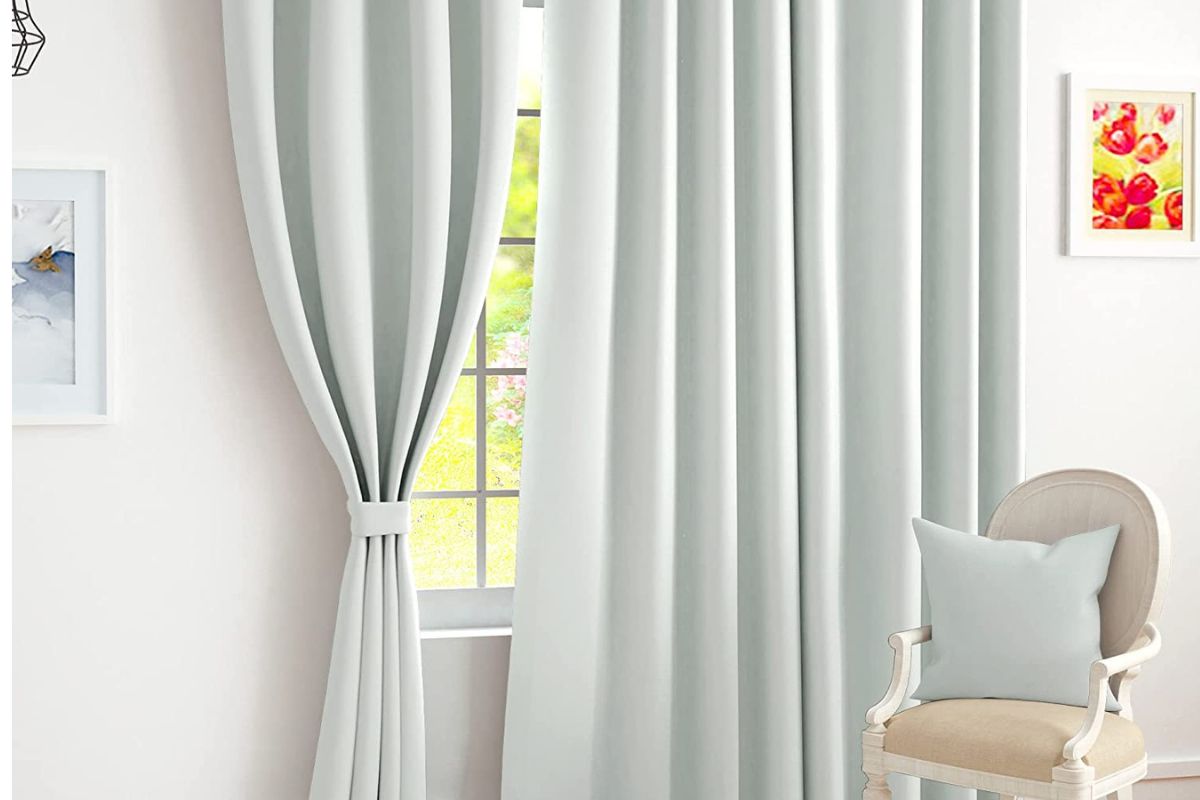
Luxurious Elegance: The Allure of Silk Curtains in Home Décor
In the realm of interior design, the choice of window treatments plays a pivotal role in defining the ambiance of a space. Among the myriad options available, silk curtains stand out as a symbol of unparalleled opulence, adding an element of luxurious elegance to any home. The allure of silk curtains extends far beyond their practical functionality, transcending into the realm of timeless sophistication and refined aesthetics.
Silk, known for its lustrous sheen and smooth texture, has been coveted for centuries as a symbol of prestige and indulgence. As we embark on the exploration of “Luxurious Elegance: The Allure of Silk Curtains in Home Decor,” we delve into the intrinsic qualities that make silk curtains a statement piece in interior design. From the mesmerising way silk drapes and captures light to its inherent ability to elevate the overall atmosphere of a room, silk curtains embody a sense of luxury that goes beyond the ordinary
Definition of Silk Curtains
silk curtains be effectively incorporated into different rooms
Incorporating silk curtains into different rooms can significantly enhance the overall ambiance and aesthetic appeal of your living space. Here are some tips on how to effectively integrate silk curtains into various rooms:
Bedroom:
- Elegant Retreat: Choose floor-length silk curtains in soothing tones for a luxurious and serene bedroom retreat.
- Layering: Consider layering silk curtains with sheer panels to create depth and a dreamy atmosphere.
- Blackout Options: Opt for blackout silk curtains for bedrooms where light control and privacy are paramount.
Living Room:
- Sophisticated Elegance: Select silk curtains in rich, jewel tones or neutral hues for a sophisticated living room ambiance.
- Drapery Styles: Experiment with different drapery styles, such as pleats or tie-backs, to add visual interest.
- Complementary Decor: Coordinate silk curtains with existing furniture and decor, creating a cohesive and polished look.
Dining Area:
- Formal Charm: Choose floor-length silk curtains in classic colors for a formal and elegant dining area.
- Lightweight Options: Opt for lightweight silk curtains that allow natural light to filter through, creating a warm and inviting dining space.
- Pattern Play: Consider silk curtains with subtle patterns or textures to add visual interest without overwhelming the dining decor.
Home Office:
- Soothing Atmosphere: Use silk curtains in calming tones to create a comfortable and focused environment.
- Functional Choices: Consider silk curtains with blackout lining or light-filtering options to control glare and maintain a conducive workspace.
- Tailoring to Fit: Tailor silk curtains to fit the specific window size and shape in your home office for a polished and customized appearance.
Kitchen:
- Casual Elegance: Opt for shorter silk curtains or cafe-style curtains for a touch of casual elegance in the kitchen.
- Easy Maintenance: Choose silk blends that are easy to maintain and clean, considering the practical aspects of a kitchen setting.
- Coordinate with Color Scheme: Select silk curtains that complement the color scheme of your kitchen, adding a touch of sophistication to the space.
Children’s Playroom:
- Playful Patterns: Consider silk curtains in playful patterns or vibrant colors to add a whimsical touch to the playroom.
- Durability: Opt for durable silk blends that can withstand the activities of a playroom while maintaining a luxurious feel.
- Safety Considerations: Ensure that curtain lengths are safe for children, avoiding any tripping hazards.
Sunroom or Outdoor Living Space:
- Light and Airy: Choose light pastels or breezy whites to amplify the sense of openness in a sunroom.
- Outdoor-Friendly Fabrics: Consider outdoor-friendly silk blends for spaces that blend seamlessly between indoor and outdoor living.
- Easy Breezy Styles: Opt for lighter and flowing silk curtains that capture the essence of a relaxed outdoor setting.
The best practices for cleaning and maintaining silk curtains
Cleaning and maintaining silk curtains require a delicate touch to preserve their luxurious appearance. Here are some best practices to ensure the longevity and beauty of your silk curtains:
Regular Dusting:
Gentle Dusting: Use a soft, clean brush attachment on your vacuum cleaner or a soft cloth to gently dust the curtains regularly. This prevents the buildup of dirt and keeps the silk looking fresh.
Spot Cleaning:
Immediate Attention: Attend spills or stains promptly by spot cleaning. Use a mild detergent or a mixture of water and white vinegar on a clean, white cloth. Always test in an inconspicuous area first.
Avoid Harsh Chemicals:
Chemical-Free Cleaning: Refrain from using harsh chemicals, bleach, or strong cleaning agents on silk curtains, as they can damage the delicate fibers and affect the sheen of the fabric.
Hand Washing or Delicate Cycle:
Careful Washing: If your silk curtains are labeled as washable, hand wash them in cold water with a mild detergent or place them in a mesh laundry bag on a gentle or delicate cycle in the washing machine. Follow the manufacturer’s care instructions.
Air Drying:
Gentle Drying: Air dry silk curtains by hanging them on a clothesline or a curtain rod. Ensure they are stretched out to avoid excessive wrinkling. Avoid using a tumble dryer, as it may damage the delicate fibers.
Ironing with Caution:
Low Heat Setting: If ironing is necessary, use a low to medium heat setting on your iron. Iron the curtains while they are slightly damp to ease out wrinkles. Place a cloth between the iron and the silk to prevent direct contact.
Avoid Overcrowding:
Individual Washing: Wash silk curtains separately or with similar fabrics to prevent tangling and potential damage during the washing process.
Professional Dry Cleaning:
Expert Care: For intricate details or if you’re unsure about washing silk curtains at home, consider professional dry cleaning. Choose a reputable cleaner experienced in handling delicate fabrics.
Protect from Sunlight:
Limit Sun Exposure: Prolonged exposure to direct sunlight can lead to color fading. Consider using sheer or light-filtering curtains in addition to silk curtains to protect them from harsh sunlight.
Store Properly:
Dry Storage: If storing silk curtains for an extended period, ensure they are clean and completely dry. Store them in a cool, dry place, preferably in a breathable fabric bag or pillowcase to protect them from dust.
Avoid Pulling Threads:
Handle with Care: Be cautious when handling silk curtains to avoid pulling threads or causing snags. Open and close them gently, and avoid sharp objects that could damage the delicate fabric.
Conclusion
In conclusion, the exquisite allure of silk curtains is not just a fleeting elegance; it’s a timeless investment that deserves meticulous care to preserve its beauty. As we’ve explored the best practices for cleaning and maintaining silk curtains, it becomes evident that the delicate nature of silk requires a gentle touch and thoughtful consideration.




0 comments